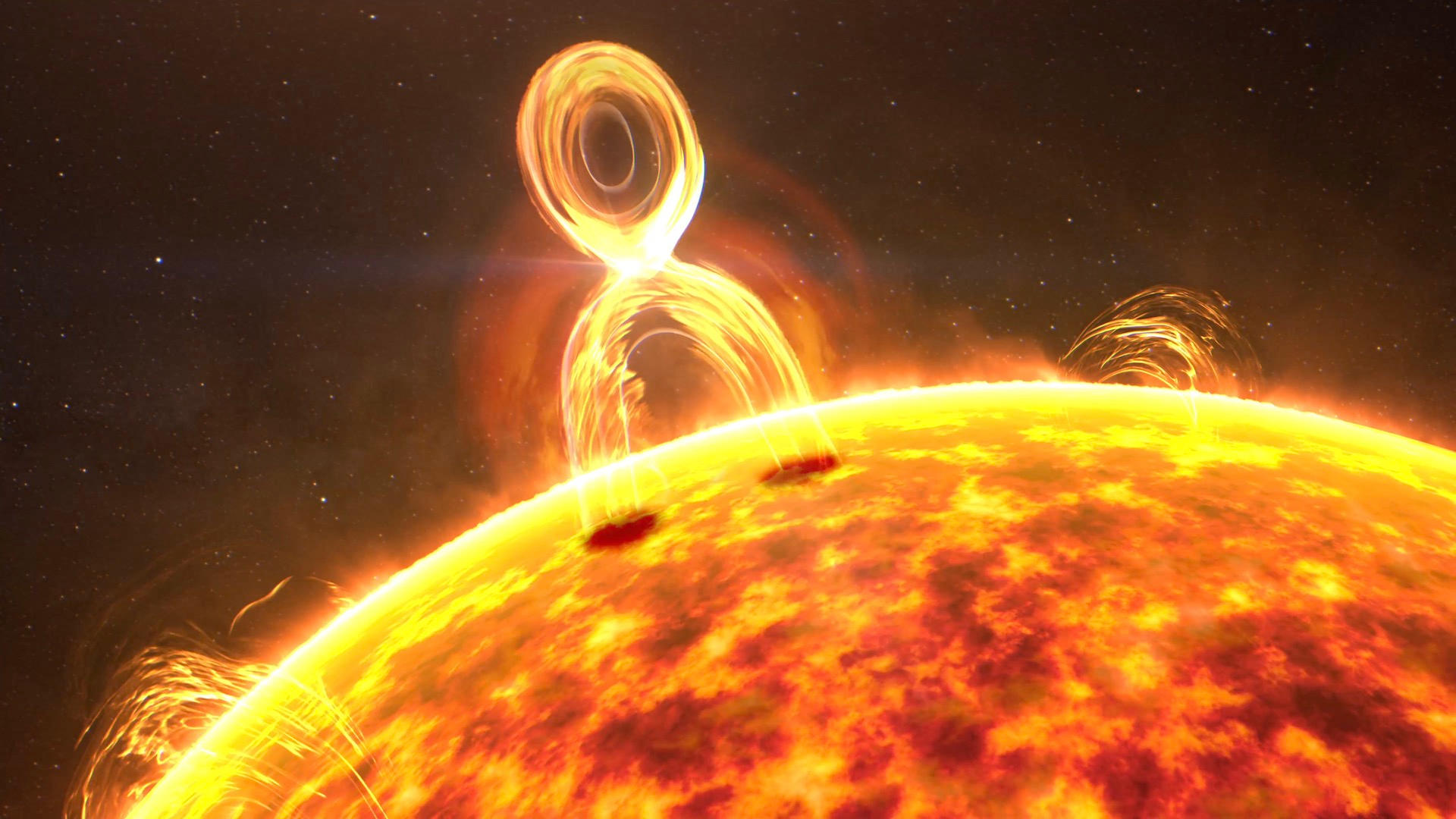
Screenshot from NASA’s Conceptual Image Lab on “Magnetic Reconnection Across the Solar System.” Magnetic reconnection occurs when parallel magnetic fields – found in this case in solar flares – collide, break and realign. This process produces a high-energy explosion that catapults particles through space. Credit: NASA Conceptual Image Lab
Scientists use powerful lasers to create miniature solar flares to study the process of magnetic reconnection.
Scientists used twelve high-energy laser beams to simulate mini solar flares in order to investigate the underlying mechanisms of magnetic reconnection, a fundamental astronomical phenomenon.
Contrary to popular belief, the universe is not empty. Despite the phrase “the vast void of space”, the universe is filled with various materials such as charged particles, gases, and cosmic rays. While celestial bodies may seem rare, the universe is bustling with activity.
One such drive of particles and energy through space is a phenomenon called magnetic reconnection. As the name suggests, magnetic reconnection takes place when two parallel magnetic fields—as in two magnetic fields traveling in opposite directions—collide, break, and realign. Although it seems harmless, it is far from calm.
This phenomenon is seen everywhere in the universe. At home, you can see them in solar flares or in the Earth’s magnetosphere. explains Taichi Morita, assistant professor at the University of Kyushu University Faculty of Engineering Sciences and the first author of the study. “In fact, the aurora borealis form as a result of charged particles being ejected from magnetic reconnection in Earth’s magnetic field.”
However, although they occur commonly, many of the mechanisms underlying these phenomena are a mystery. Studies are being conducted, such as in[{” attribute=””>NASA’s Magnetospheric Multiscale Mission, where magnetic reconnections are studied in real-time by satellites sent into Earth’s magnetosphere. However, things such as the speed of reconnection or how energy from the magnetic field is converted and distributed to the particles in the plasma remain unexplained.
An alternative to sending satellites into space is to use lasers and artificially generate plasma arcs that produce magnetic reconnections. However, without suitable laser strength, the generated plasma is too small and unstable to study the phenomena accurately.
“One facility that has the required power is Osaka University’s Institute for Laser Engineering and their Gekko XII laser. It’s a massive 12-beam, high-powered laser that can generate plasma stable enough for us to study,” explains Morita. “Studying astrophysical phenomena using high-energy lasers is called ‘laser astrophysics experiments,’ and it has been a developing methodology in recent years.”
In their experiments, reported in Physical Review E, the high-power lasers were used to generate two plasma fields with anti-parallel magnetic fields. The team then focused a low-energy laser into the center of the plasma where the magnetic fields would meet and where magnetic reconnection would theoretically occur.
“We are essentially recreating the dynamics and conditions of a solar flare. Nonetheless, by analyzing how the light from that low-energy laser scatters, we can measure all sorts of parameters from plasma temperature, velocity, ion valence, current, and plasma flow velocity,” continues Morita.
One of their key findings was recording the appearance and disappearance of electrical currents where the magnetic fields met, indicating magnetic reconnection. Additionally, they were able to collect data on the acceleration and heating of the plasma.
The team plans on continuing their analysis and hopes that these types of ‘laser astrophysics experiments’ will be more readily used as an alternative or complementary way to investigate astrophysical phenomena.
“This method can be used to study all sorts of things like astrophysical shockwaves, cosmic-ray acceleration, and magnetic turbulence. Many of these phenomena can damage and disrupt electrical devices and the human body,” concludes Morita. “So, if we ever want to be a spacefaring race, we must work to understand these common cosmic events.”
Reference: “Detection of current-sheet and bipolar ion flows in a self-generated antiparallel magnetic field of laser-produced plasmas for magnetic reconnection research” by T. Morita, T. Kojima, S. Matsuo, S. Matsukiyo, S. Isayama, R. Yamazaki, S. J. Tanaka, K. Aihara, Y. Sato, J. Shiota, Y. Pan, K. Tomita, T. Takezaki, Y. Kuramitsu, K. Sakai, S. Egashira, H. Ishihara, O. Kuramoto, Y. Matsumoto, K. Maeda and Y. Sakawa, 10 November 2022, Physical Review E.
DOI: 10.1103/PhysRevE.106.055207
The study was funded by the Japan Society for the Promotion of Science.

“Reader. Infuriatingly humble coffee enthusiast. Future teen idol. Tv nerd. Explorer. Organizer. Twitter aficionado. Evil music fanatic.”
